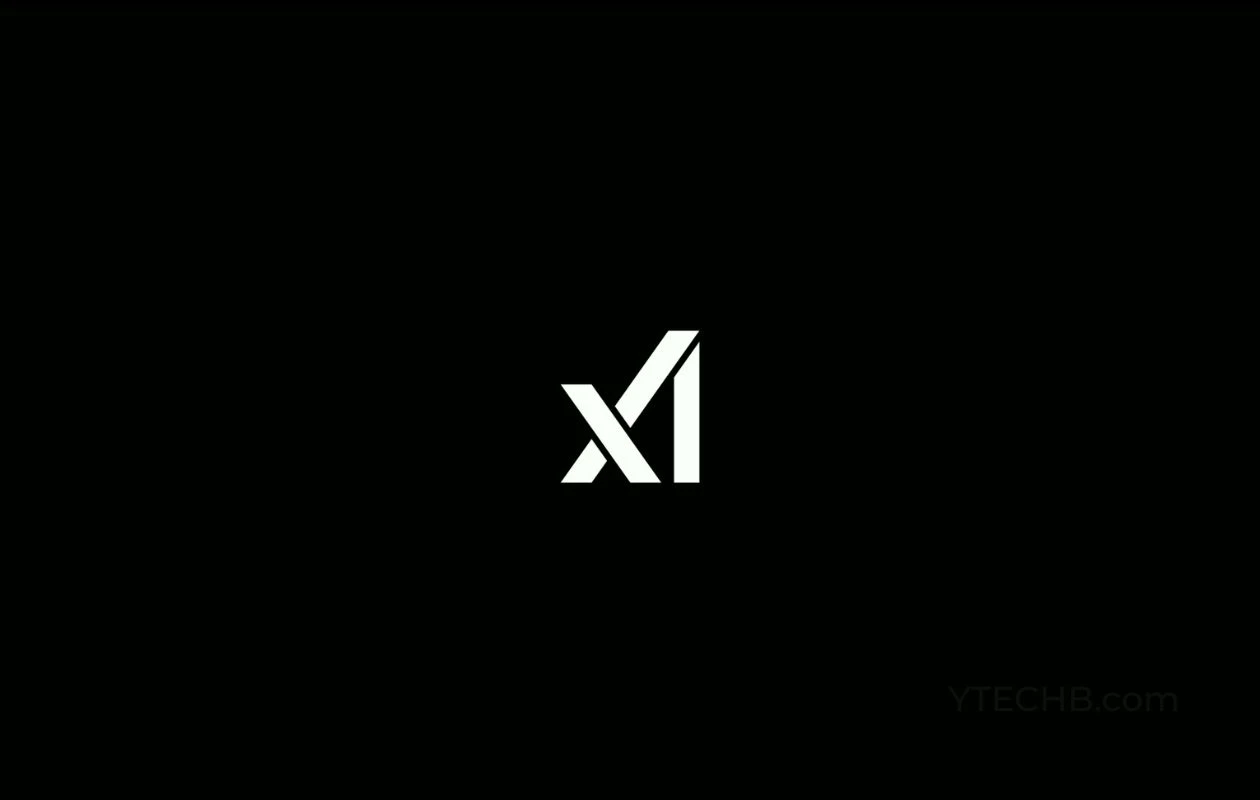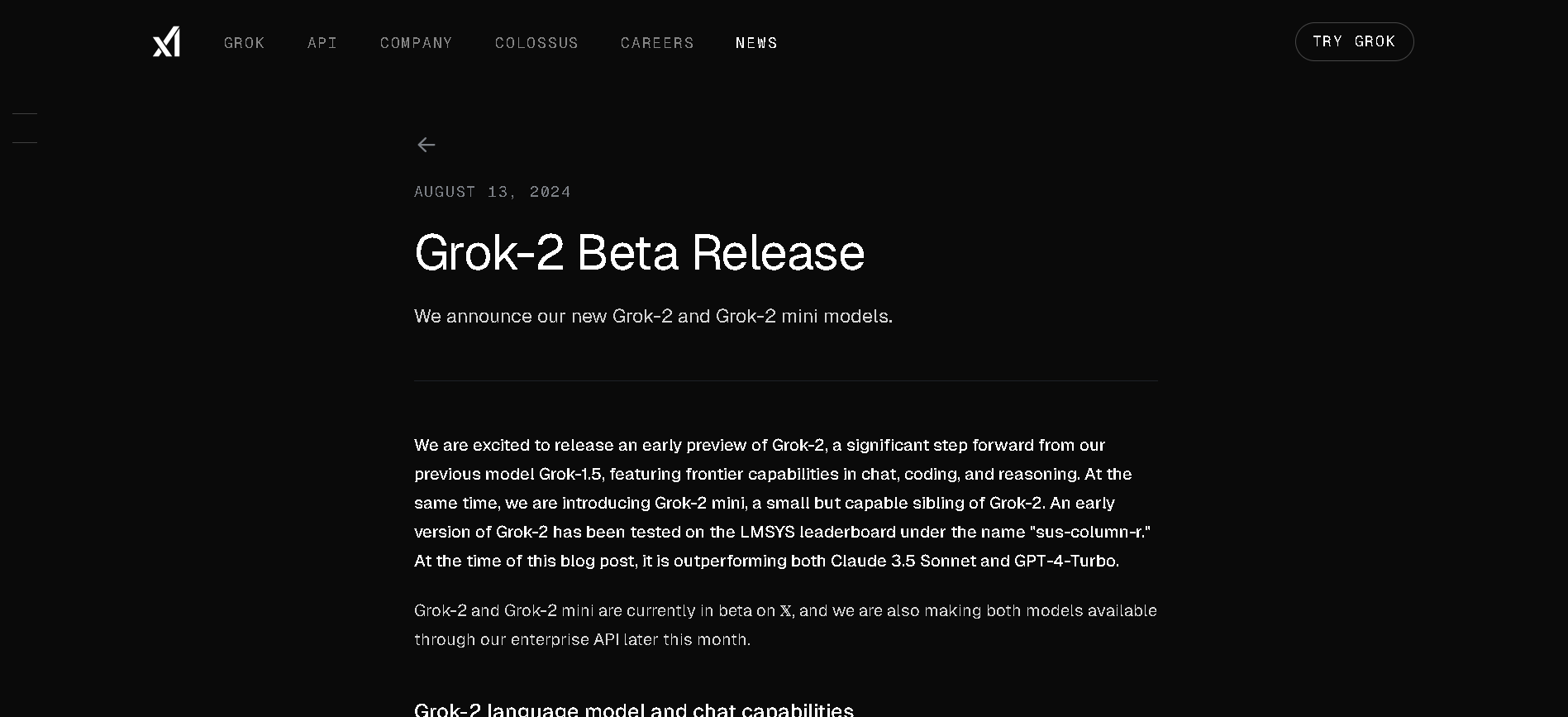
- Developers & Engineers: Build multimodal assistants for image tasks—object detection, chart interpretation, OCR, document understanding.
- Analysts & Researchers: Automate visual data extraction, report Q&A, and diagram reasoning.
- Educators & Students: Tackle image-based math/science problems with interactive visual Q&A.
- Content Creators & Designers: Generate and analyze visuals through prompt-based style critique and FLUX.1-powered image creation.
- Enterprises & Automation Teams: Deploy cohesive pipelines that combine vision understanding, reasoning, and generation.
How to Use Grok 2 Vision (Latest)?
- Select the Variant: Use `grok-2-vision-latest` (or `...1212`) via xAI’s API or platform provider integrations.
- Send Combined Prompts: Upload images (base64/URL) alongside text, within a 32K-token prompt.
- Analyze & Generate: Perform object recognition, interpret charts/documents, or generate images with FLUX.1 style via Aurora.
- Monitor Usage & Cost: Charged at US $2 per million input and US $10 per million output tokens.
- Benchmark Excellence: Outperforms peers on MathVista (
69%) and DocVQA (93.6%) tasks. - Dual Vision Use: Supports both image analysis and creation (FLUX.1 → Aurora) in one model.
- Unified Multimodal Pipeline: Single model handles vision understanding and image generation within the same API.
- Developer-Friendly Serving: Available via enterprise API and integrated into platforms like xAI and LangDB.
- State-of-the-art visual math and document Q&A performance
- Combines image analysis and generation via FLUX.1
- Unified prompts—no separate image endpoint
- Developer-ready with manageable pricing
- Ideal for both analytic and creative visual workflows
- 32K-token context may limit large-document vision tasks
- FLUX.1 permissiveness risks generating misleading or sensitive images
- Price may be steep for high-volume visual pipelines
Free Tier
$ 0.00
Limited access to DeepSearch
Limited access to DeeperSearch
Super Grok
$30/month
More Aurora Images - 100 Images / 2h
Even Better Memory - 128K Context Window
Extended access to Thinking - 30 Queries / 2h
Extended access to DeepSearch - 30 Queries / 2h
Extended access to DeeperSearch - 10 Queries / 2h
API
$2/$10 per 1M tokens
Image Input - $2/M
Output - $10/M
Proud of the love you're getting? Show off your AI Toolbook reviews—then invite more fans to share the love and build your credibility.
Add an AI Toolbook badge to your site—an easy way to drive followers, showcase updates, and collect reviews. It's like a mini 24/7 billboard for your AI.
Reviews
Rating Distribution
Average score
Popular Mention
FAQs
Similar AI Tools

GPT-4o Mini Realtime Preview is a lightweight, high-speed variant of OpenAI’s flagship multimodal model, GPT-4o. Built for blazing-fast, cost-efficient inference across text, vision, and voice inputs, this preview version is optimized for real-time responsiveness—without compromising on core intelligence. Whether you’re building chatbots, interactive voice tools, or lightweight apps, GPT-4o Mini delivers smart performance with minimal latency and compute load. It’s the perfect choice when you need responsiveness, affordability, and multimodal capabilities all in one efficient package.

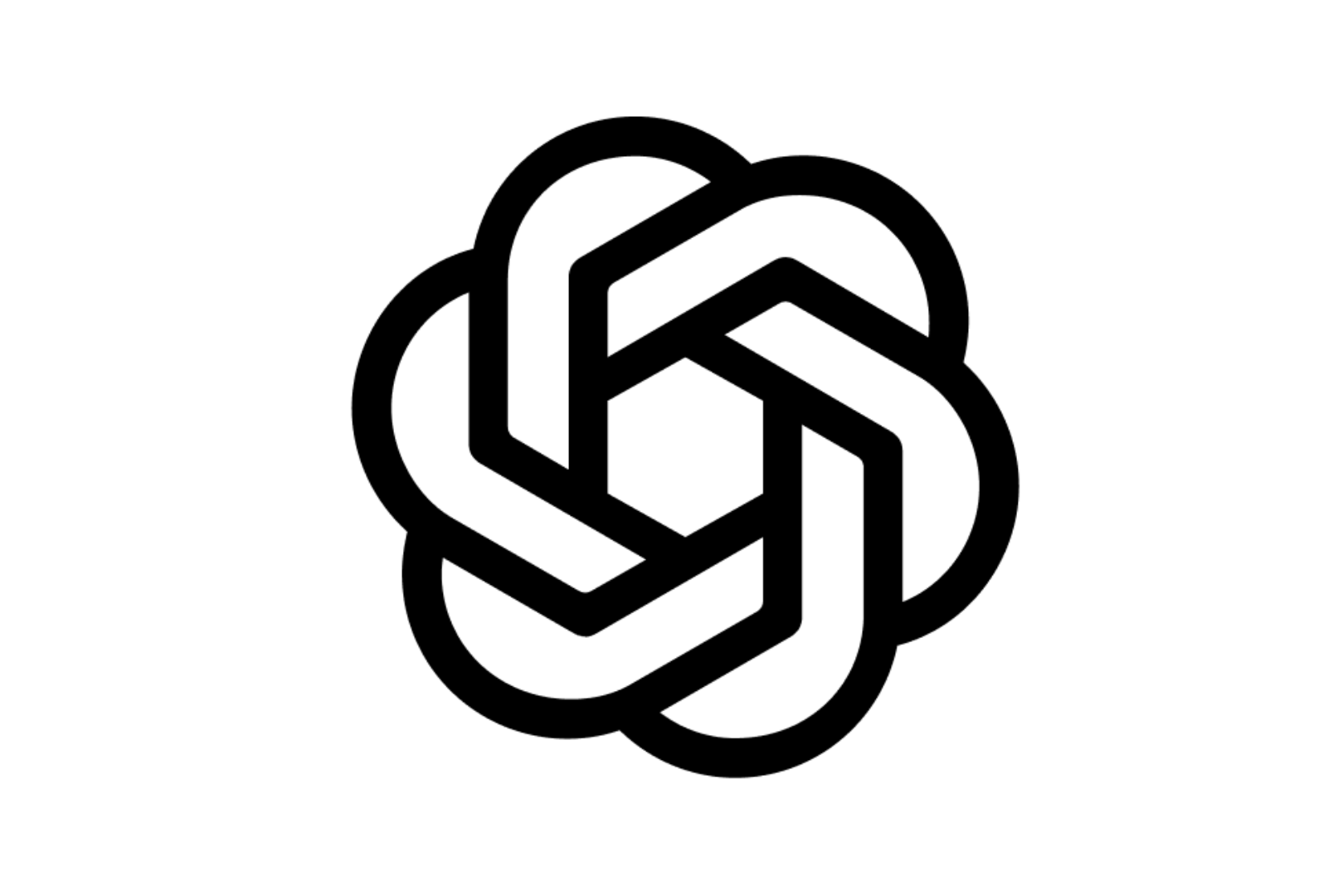
OpenAI GPT 4o mini..
GPT-4o Mini Realtime Preview is a lightweight, high-speed variant of OpenAI’s flagship multimodal model, GPT-4o. Built for blazing-fast, cost-efficient inference across text, vision, and voice inputs, this preview version is optimized for real-time responsiveness—without compromising on core intelligence. Whether you’re building chatbots, interactive voice tools, or lightweight apps, GPT-4o Mini delivers smart performance with minimal latency and compute load. It’s the perfect choice when you need responsiveness, affordability, and multimodal capabilities all in one efficient package.


OpenAI GPT 4o mini..
GPT-4o Mini Realtime Preview is a lightweight, high-speed variant of OpenAI’s flagship multimodal model, GPT-4o. Built for blazing-fast, cost-efficient inference across text, vision, and voice inputs, this preview version is optimized for real-time responsiveness—without compromising on core intelligence. Whether you’re building chatbots, interactive voice tools, or lightweight apps, GPT-4o Mini delivers smart performance with minimal latency and compute load. It’s the perfect choice when you need responsiveness, affordability, and multimodal capabilities all in one efficient package.
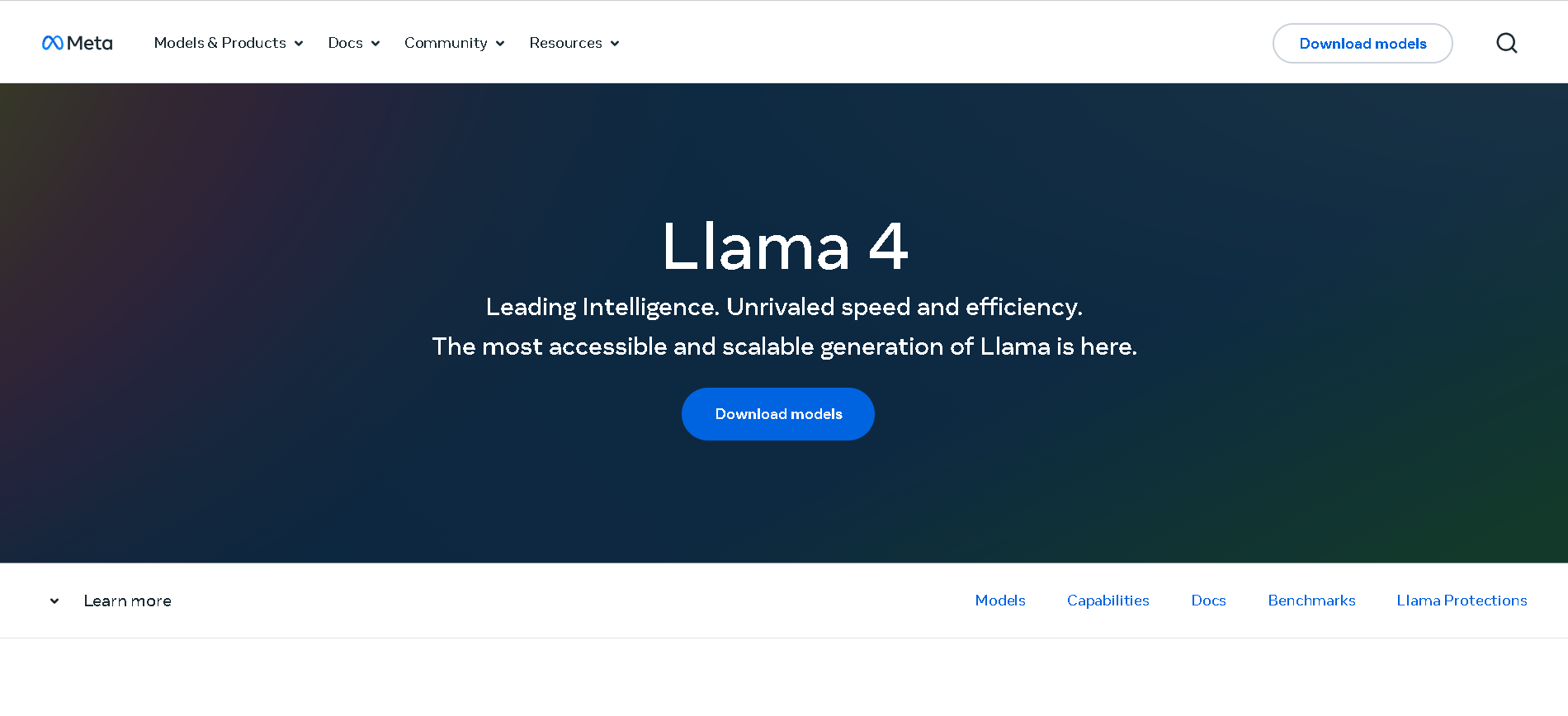
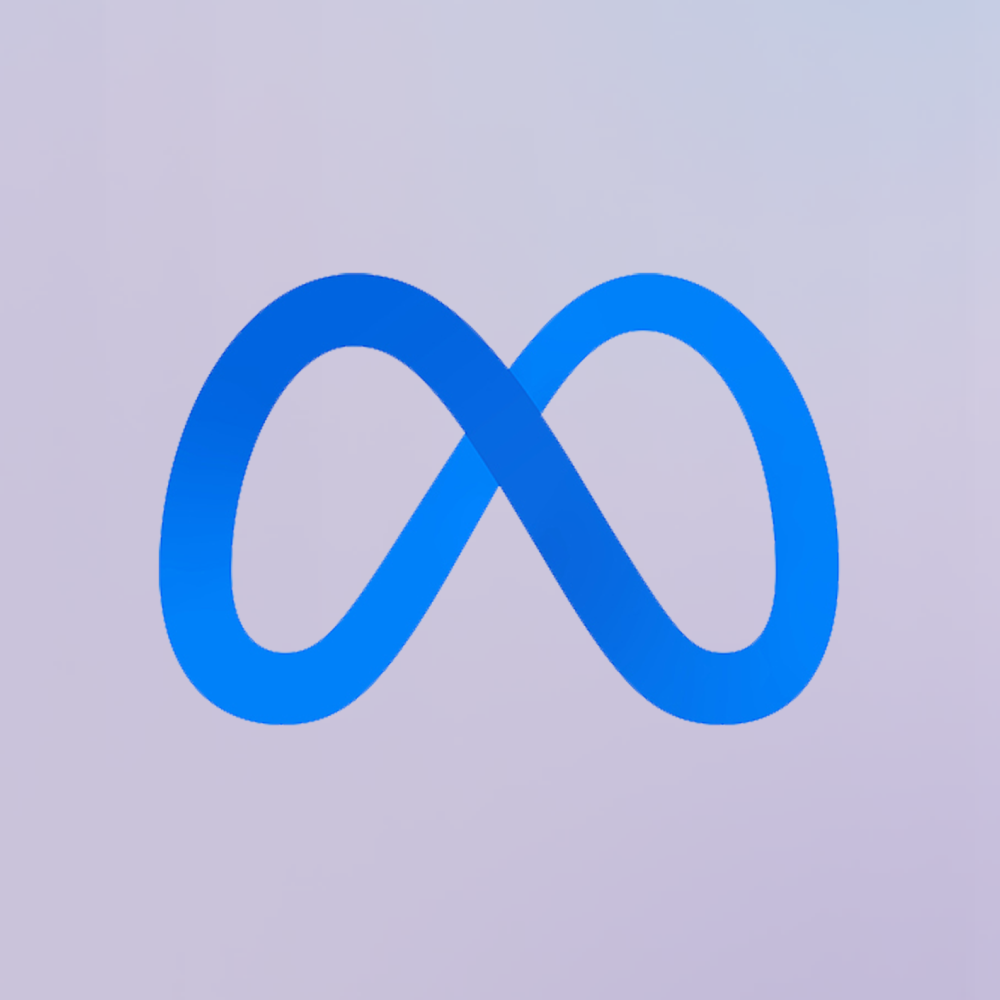
Meta Llama 4
Meta Llama 4 is the latest generation of Meta’s large language model series. It features a mixture-of-experts (MoE) architecture, making it both highly efficient and powerful. Llama 4 is natively multimodal—supporting text and image inputs—and offers three key variants: Scout (17B active parameters, 10 M token context), Maverick (17B active, 1 M token context), and Behemoth (288B active, 2 T total parameters; still in development). Designed for long-context reasoning, multilingual understanding, and open-weight availability (with license restrictions), Llama 4 excels in benchmarks and versatility.


Meta Llama 4
Meta Llama 4 is the latest generation of Meta’s large language model series. It features a mixture-of-experts (MoE) architecture, making it both highly efficient and powerful. Llama 4 is natively multimodal—supporting text and image inputs—and offers three key variants: Scout (17B active parameters, 10 M token context), Maverick (17B active, 1 M token context), and Behemoth (288B active, 2 T total parameters; still in development). Designed for long-context reasoning, multilingual understanding, and open-weight availability (with license restrictions), Llama 4 excels in benchmarks and versatility.


Meta Llama 4
Meta Llama 4 is the latest generation of Meta’s large language model series. It features a mixture-of-experts (MoE) architecture, making it both highly efficient and powerful. Llama 4 is natively multimodal—supporting text and image inputs—and offers three key variants: Scout (17B active parameters, 10 M token context), Maverick (17B active, 1 M token context), and Behemoth (288B active, 2 T total parameters; still in development). Designed for long-context reasoning, multilingual understanding, and open-weight availability (with license restrictions), Llama 4 excels in benchmarks and versatility.
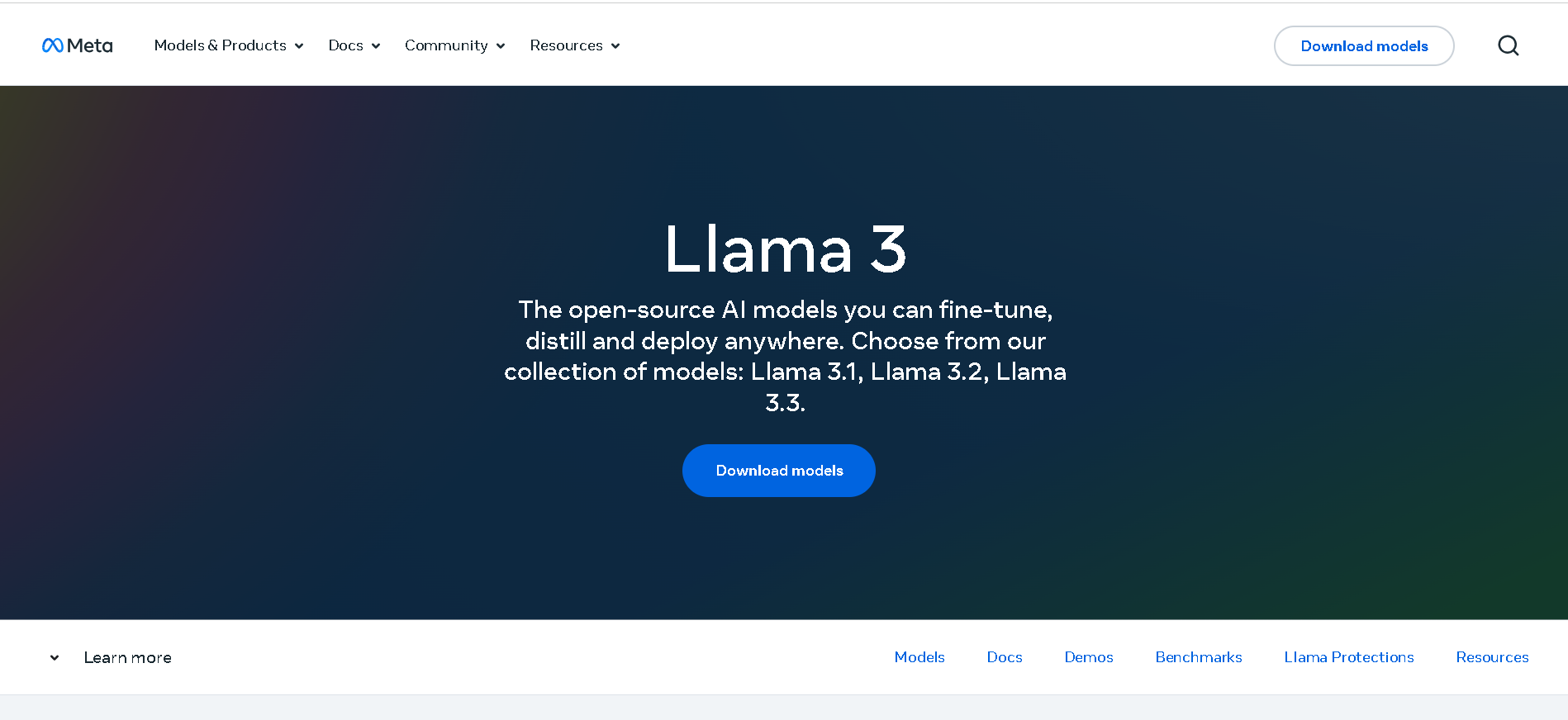
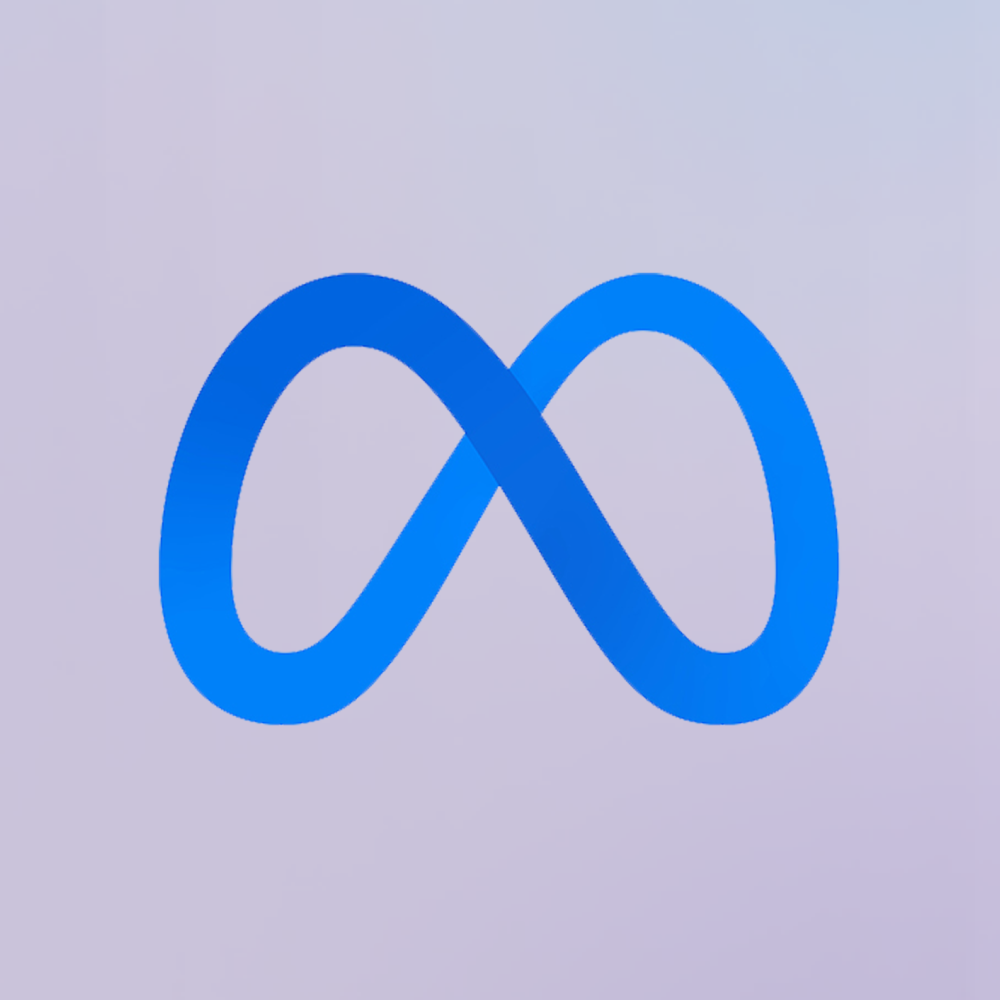
Meta Llama 3
Meta Llama 3 is Meta’s third-generation open-weight large language model family, released in April 2024 and enhanced in July 2024 with the 3.1 update. It spans three sizes—8B, 70B, and 405B parameters—each offering a 128K‑token context window. Llama 3 excels at reasoning, code generation, multilingual text, and instruction-following, and introduces multimodal vision (image understanding) capabilities in its 3.2 series. Robust safety mechanisms like Llama Guard 3, Code Shield, and CyberSec Eval 2 ensure responsible output.


Meta Llama 3
Meta Llama 3 is Meta’s third-generation open-weight large language model family, released in April 2024 and enhanced in July 2024 with the 3.1 update. It spans three sizes—8B, 70B, and 405B parameters—each offering a 128K‑token context window. Llama 3 excels at reasoning, code generation, multilingual text, and instruction-following, and introduces multimodal vision (image understanding) capabilities in its 3.2 series. Robust safety mechanisms like Llama Guard 3, Code Shield, and CyberSec Eval 2 ensure responsible output.


Meta Llama 3
Meta Llama 3 is Meta’s third-generation open-weight large language model family, released in April 2024 and enhanced in July 2024 with the 3.1 update. It spans three sizes—8B, 70B, and 405B parameters—each offering a 128K‑token context window. Llama 3 excels at reasoning, code generation, multilingual text, and instruction-following, and introduces multimodal vision (image understanding) capabilities in its 3.2 series. Robust safety mechanisms like Llama Guard 3, Code Shield, and CyberSec Eval 2 ensure responsible output.
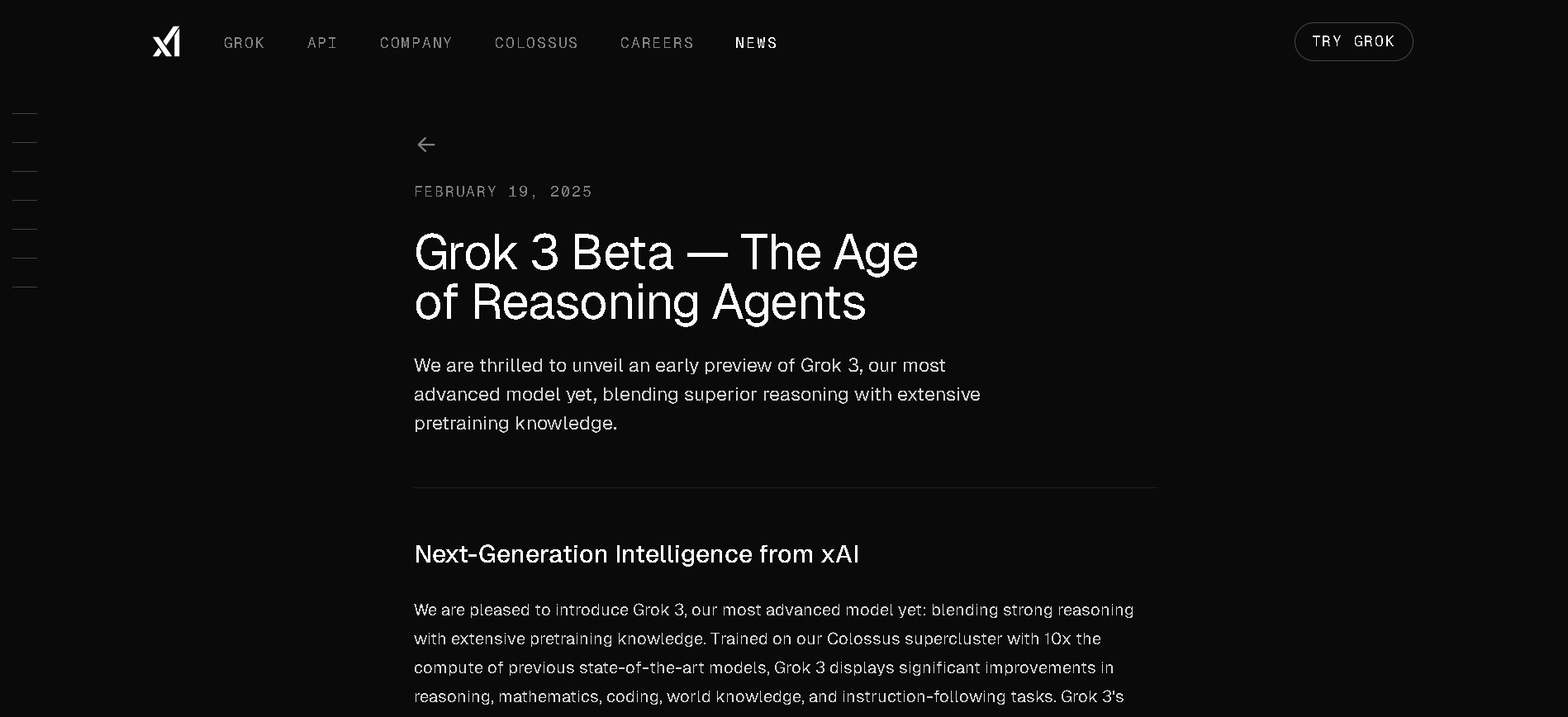
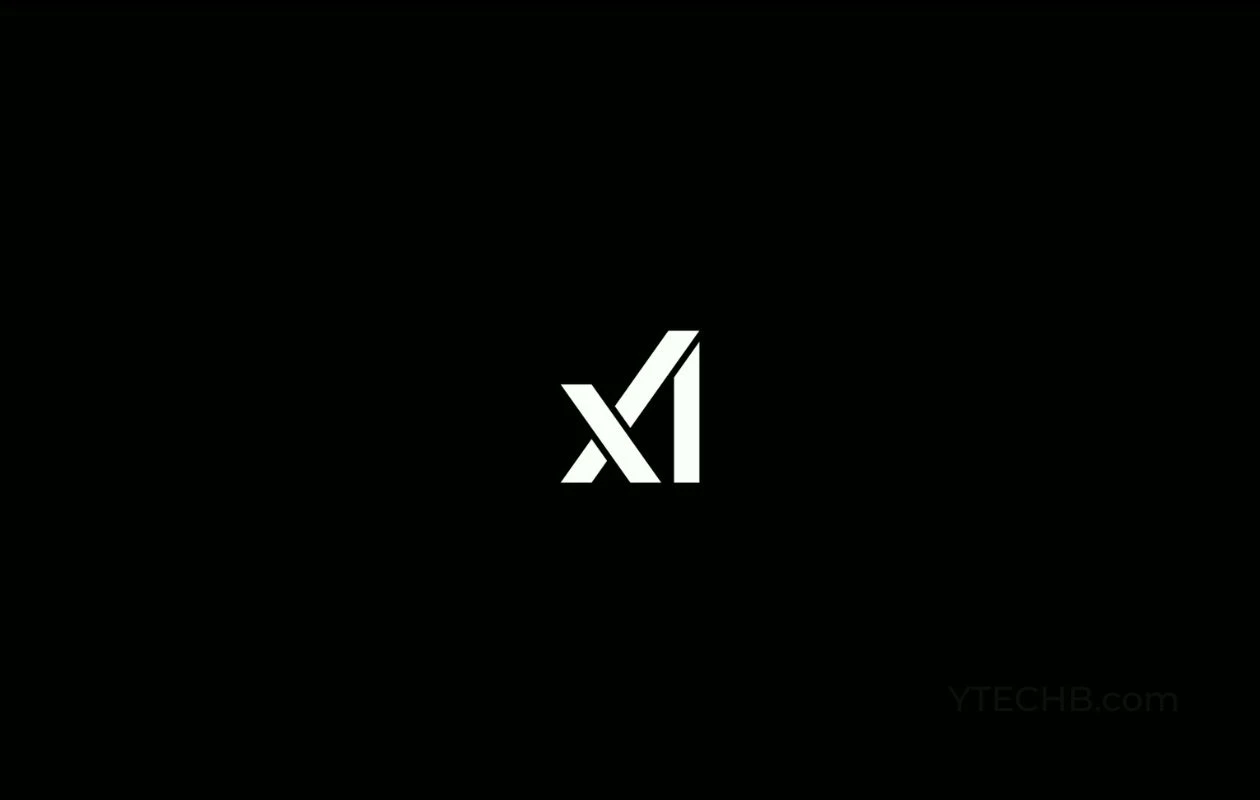
grok-3-mini-fast
Grok 3 Mini Fast is the low-latency, high-performance version of xAI’s Grok 3 Mini model. Released in beta around May 2025, it offers the same visible chain-of-thought reasoning as Grok 3 Mini but delivers responses significantly faster, powered by optimized infrastructure. It supports up to 131,072 tokens of context.


grok-3-mini-fast
Grok 3 Mini Fast is the low-latency, high-performance version of xAI’s Grok 3 Mini model. Released in beta around May 2025, it offers the same visible chain-of-thought reasoning as Grok 3 Mini but delivers responses significantly faster, powered by optimized infrastructure. It supports up to 131,072 tokens of context.


grok-3-mini-fast
Grok 3 Mini Fast is the low-latency, high-performance version of xAI’s Grok 3 Mini model. Released in beta around May 2025, it offers the same visible chain-of-thought reasoning as Grok 3 Mini but delivers responses significantly faster, powered by optimized infrastructure. It supports up to 131,072 tokens of context.
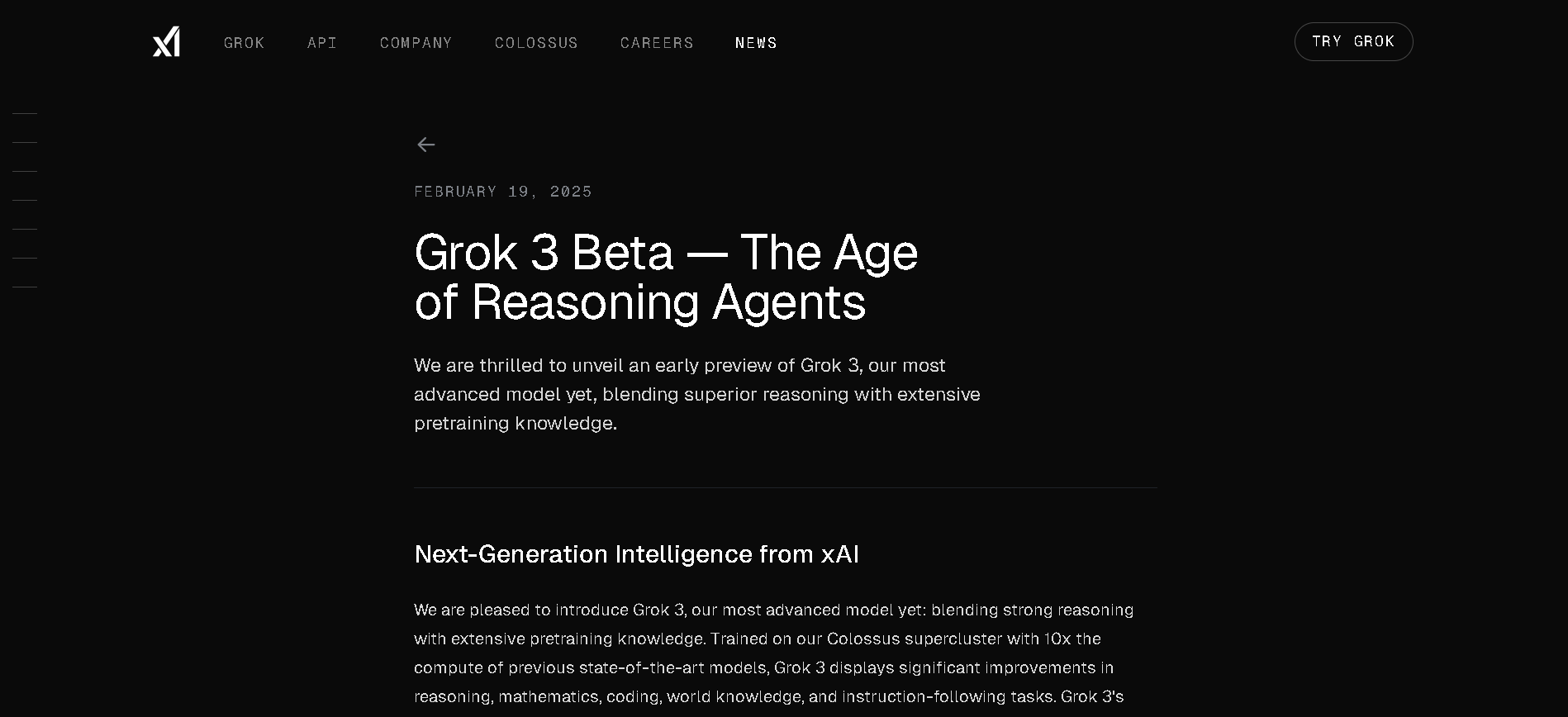
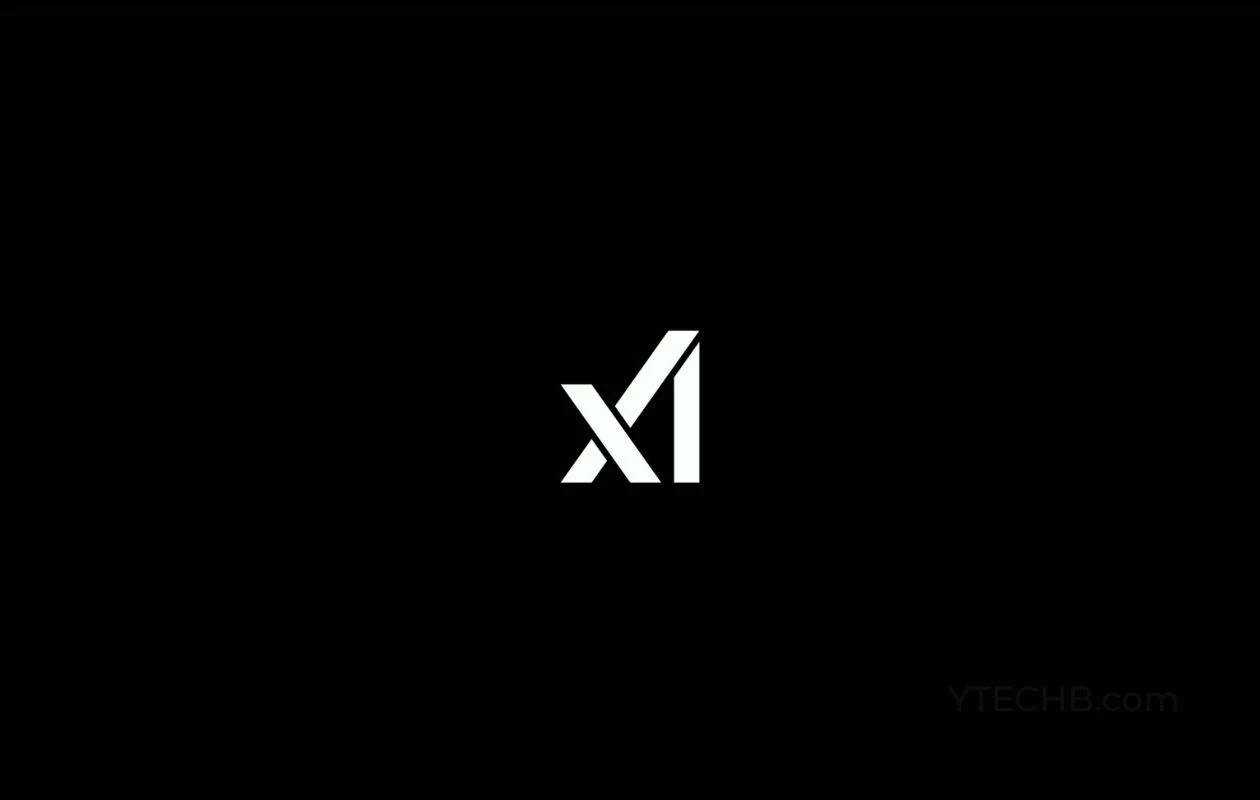
grok-3-mini-fast-l..
Grok 3 Mini Fast is xAI’s most recent, low-latency variant of the compact Grok 3 Mini model. It maintains full chain-of-thought “Think” reasoning and multimodal support while delivering faster response times. The model handles up to 131,072 tokens of context and is now widely accessible in beta via xAI API and select cloud platforms.


grok-3-mini-fast-l..
Grok 3 Mini Fast is xAI’s most recent, low-latency variant of the compact Grok 3 Mini model. It maintains full chain-of-thought “Think” reasoning and multimodal support while delivering faster response times. The model handles up to 131,072 tokens of context and is now widely accessible in beta via xAI API and select cloud platforms.


grok-3-mini-fast-l..
Grok 3 Mini Fast is xAI’s most recent, low-latency variant of the compact Grok 3 Mini model. It maintains full chain-of-thought “Think” reasoning and multimodal support while delivering faster response times. The model handles up to 131,072 tokens of context and is now widely accessible in beta via xAI API and select cloud platforms.
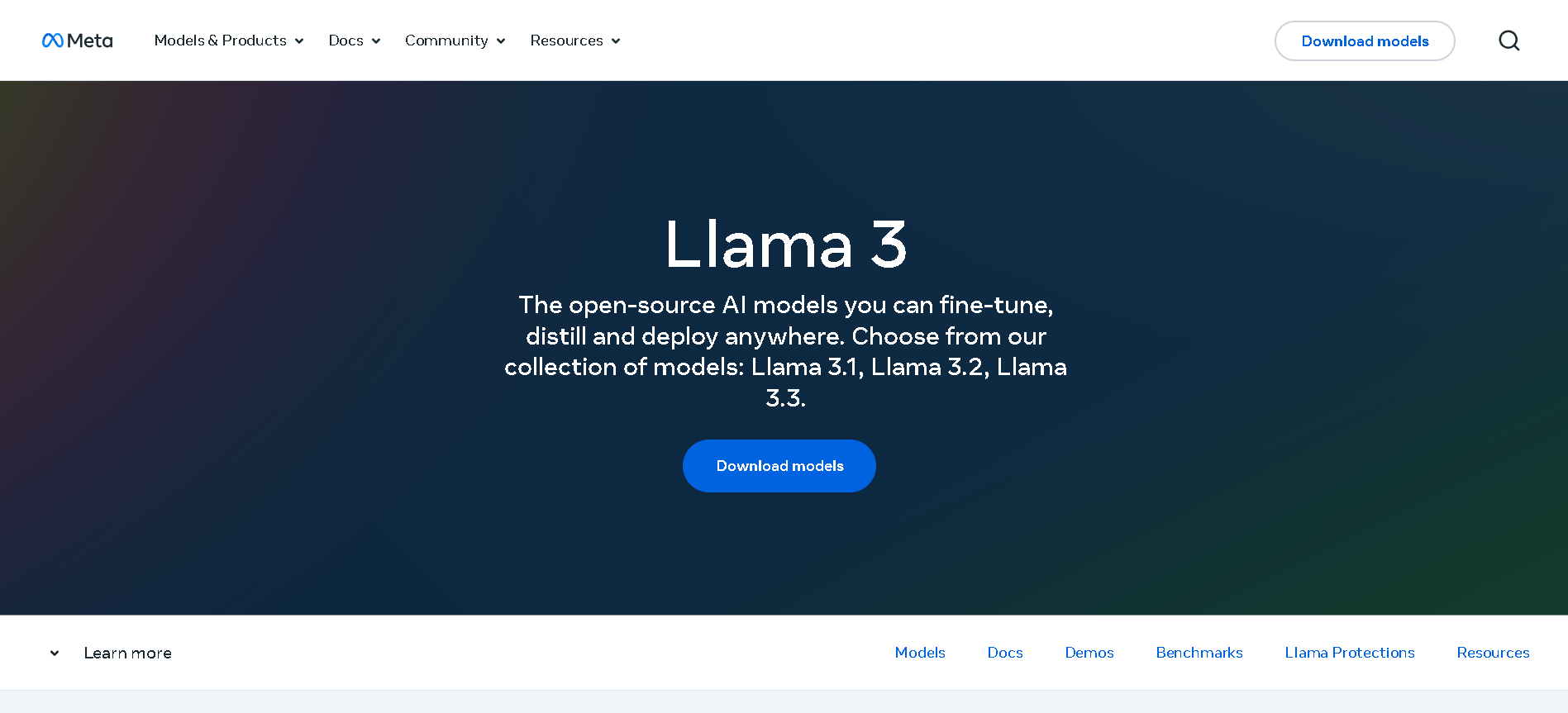

Meta Llama 3.3
Llama 3.3 is Meta’s instruction-tuned, text-only large language model released on December 6, 2024, available in a 70B-parameter size. It matches the performance of much larger models using significantly fewer parameters, is multilingual across eight key languages, and supports a massive 128,000-token context window—ideal for handling long-form documents, codebases, and detailed reasoning tasks.


Meta Llama 3.3
Llama 3.3 is Meta’s instruction-tuned, text-only large language model released on December 6, 2024, available in a 70B-parameter size. It matches the performance of much larger models using significantly fewer parameters, is multilingual across eight key languages, and supports a massive 128,000-token context window—ideal for handling long-form documents, codebases, and detailed reasoning tasks.


Meta Llama 3.3
Llama 3.3 is Meta’s instruction-tuned, text-only large language model released on December 6, 2024, available in a 70B-parameter size. It matches the performance of much larger models using significantly fewer parameters, is multilingual across eight key languages, and supports a massive 128,000-token context window—ideal for handling long-form documents, codebases, and detailed reasoning tasks.
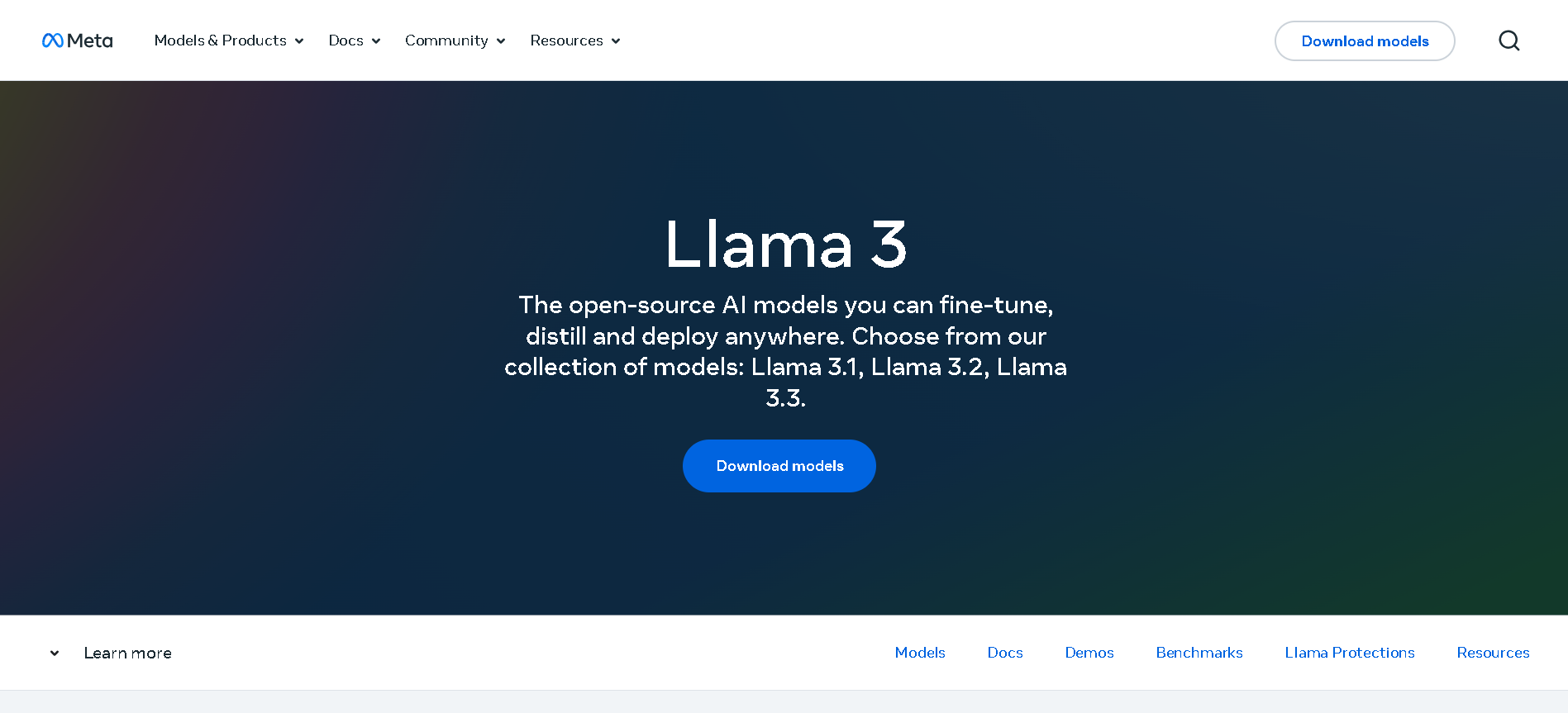

Meta Llama 3.2 Vis..
Llama 3.2 Vision is Meta’s first open-source multimodal Llama model series, released on September 25, 2024. Available in 11 B and 90 B parameter sizes, it merges advanced image understanding with a massive 128 K‑token text context. Optimized for vision reasoning, captioning, document QA, and visual math tasks, it outperforms many closed-source multimodal models.


Meta Llama 3.2 Vis..
Llama 3.2 Vision is Meta’s first open-source multimodal Llama model series, released on September 25, 2024. Available in 11 B and 90 B parameter sizes, it merges advanced image understanding with a massive 128 K‑token text context. Optimized for vision reasoning, captioning, document QA, and visual math tasks, it outperforms many closed-source multimodal models.


Meta Llama 3.2 Vis..
Llama 3.2 Vision is Meta’s first open-source multimodal Llama model series, released on September 25, 2024. Available in 11 B and 90 B parameter sizes, it merges advanced image understanding with a massive 128 K‑token text context. Optimized for vision reasoning, captioning, document QA, and visual math tasks, it outperforms many closed-source multimodal models.
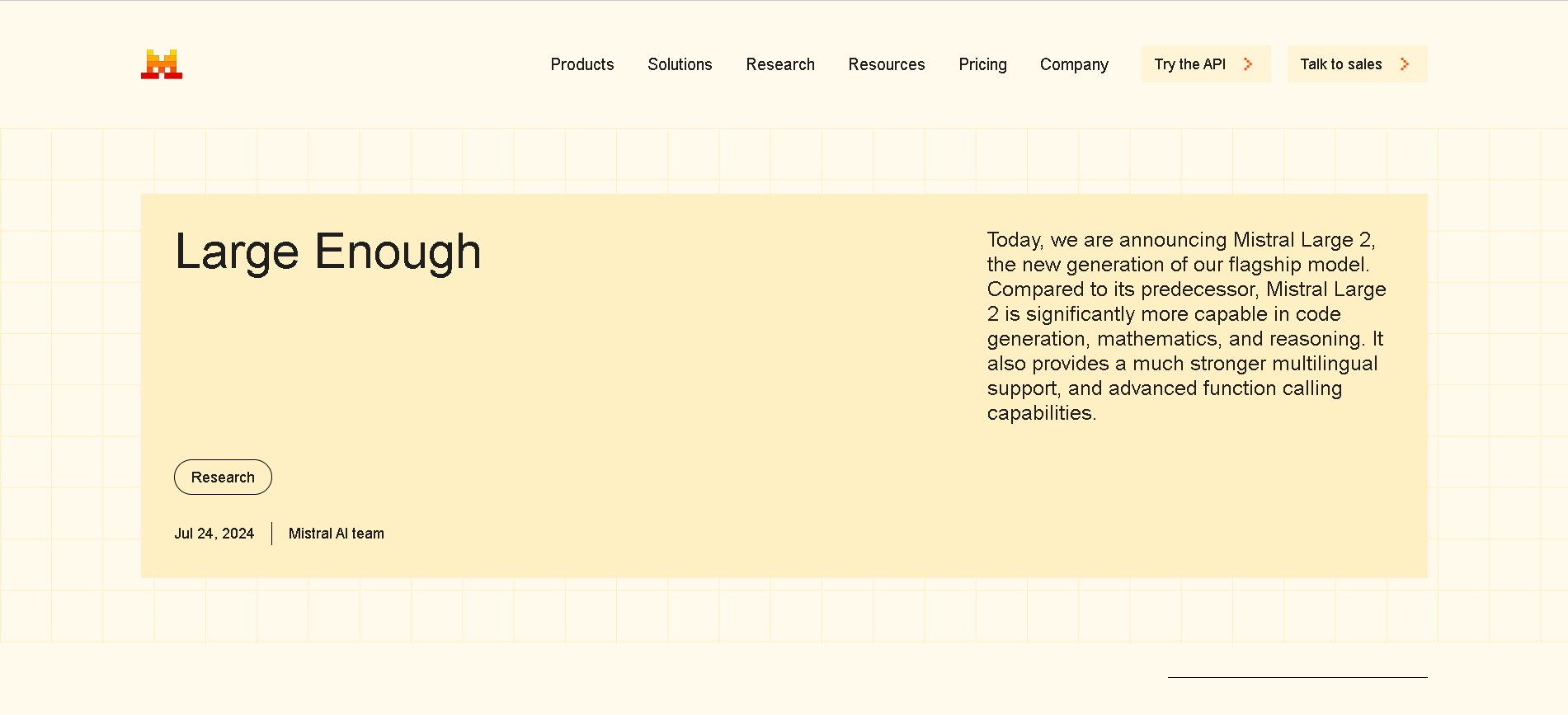
Mistral Large 2
Mistral Large 2 is the second-generation flagship model from Mistral AI, released in July 2024. Also referenced as mistral-large-2407, it’s a 123 B-parameter dense LLM with a 128 K-token context window, supporting dozens of languages and 80+ coding languages. It excels in reasoning, code generation, mathematics, instruction-following, and function calling—designed for high throughput on single-node setups.

Mistral Large 2
Mistral Large 2 is the second-generation flagship model from Mistral AI, released in July 2024. Also referenced as mistral-large-2407, it’s a 123 B-parameter dense LLM with a 128 K-token context window, supporting dozens of languages and 80+ coding languages. It excels in reasoning, code generation, mathematics, instruction-following, and function calling—designed for high throughput on single-node setups.

Mistral Large 2
Mistral Large 2 is the second-generation flagship model from Mistral AI, released in July 2024. Also referenced as mistral-large-2407, it’s a 123 B-parameter dense LLM with a 128 K-token context window, supporting dozens of languages and 80+ coding languages. It excels in reasoning, code generation, mathematics, instruction-following, and function calling—designed for high throughput on single-node setups.
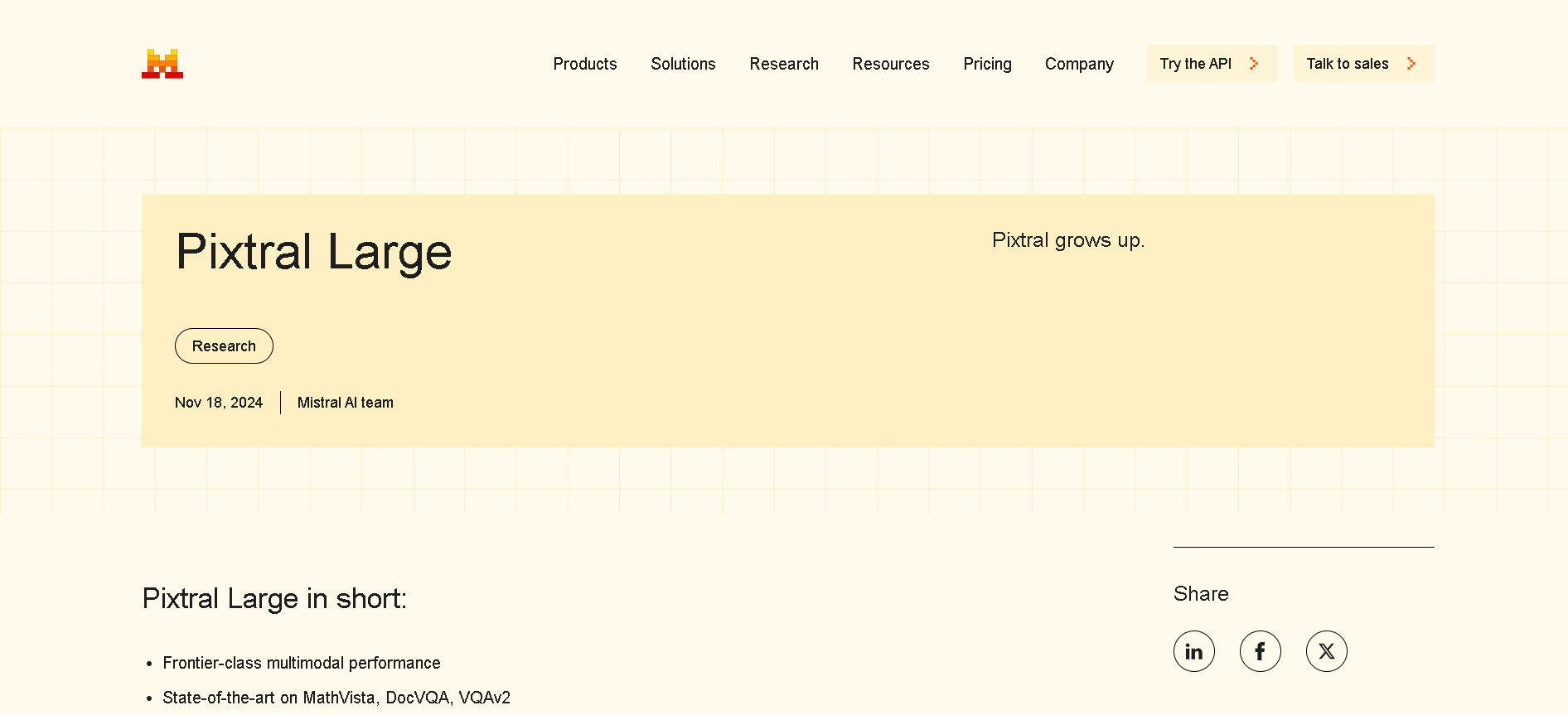
Mistral Pixtral La..
Pixtral Large is Mistral AI’s latest multimodal powerhouse, launched November 18, 2024. Built atop the 123B‑parameter Mistral Large 2, it features a 124B‑parameter multimodal decoder paired with a 1B‑parameter vision encoder, and supports a massive 128K‑token context window—enabling it to process up to 30 high-resolution images or ~300-page documents.

Mistral Pixtral La..
Pixtral Large is Mistral AI’s latest multimodal powerhouse, launched November 18, 2024. Built atop the 123B‑parameter Mistral Large 2, it features a 124B‑parameter multimodal decoder paired with a 1B‑parameter vision encoder, and supports a massive 128K‑token context window—enabling it to process up to 30 high-resolution images or ~300-page documents.

Mistral Pixtral La..
Pixtral Large is Mistral AI’s latest multimodal powerhouse, launched November 18, 2024. Built atop the 123B‑parameter Mistral Large 2, it features a 124B‑parameter multimodal decoder paired with a 1B‑parameter vision encoder, and supports a massive 128K‑token context window—enabling it to process up to 30 high-resolution images or ~300-page documents.
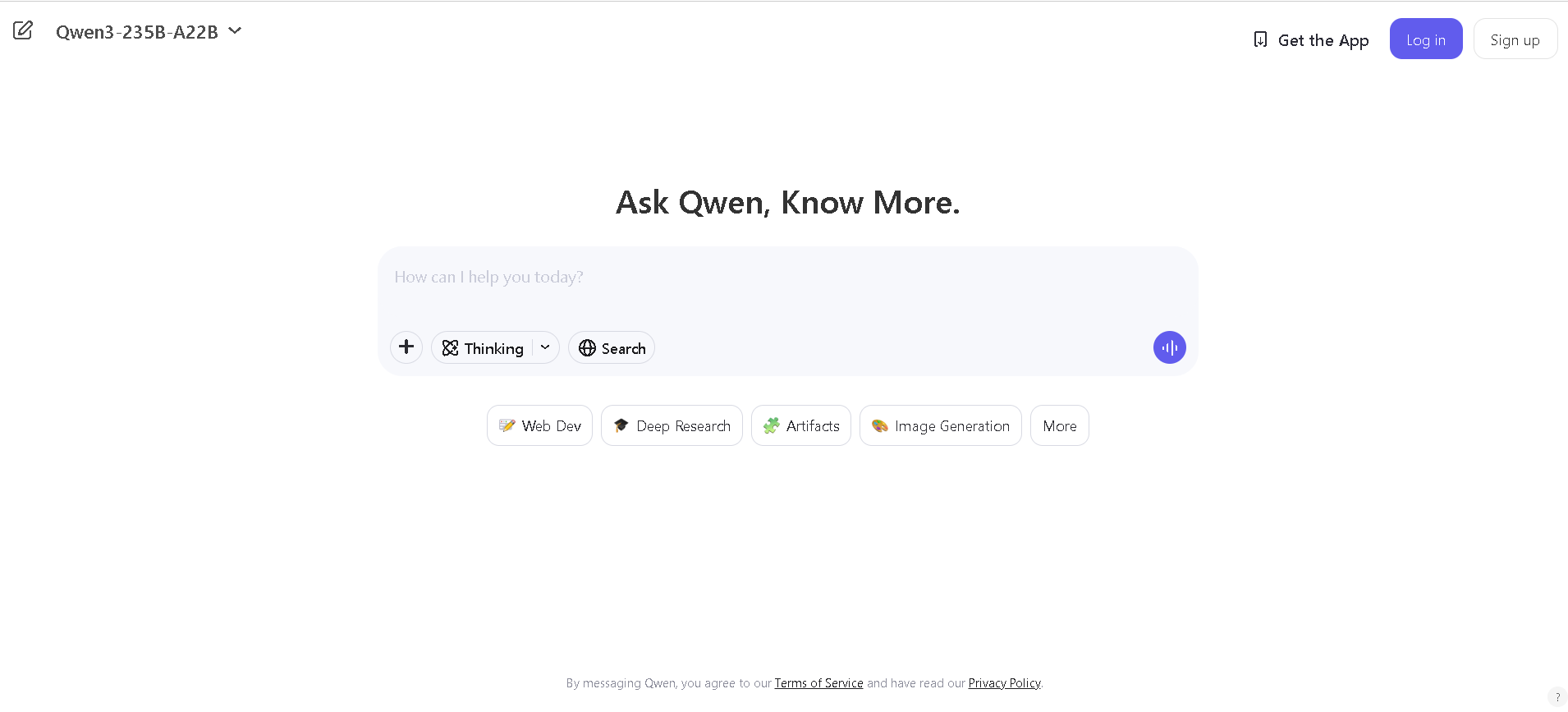
Qwen Chat
Qwen Chat is Alibaba Cloud’s conversational AI assistant built on the Qwen series (e.g., Qwen‑7B‑Chat, Qwen1.5‑7B‑Chat, Qwen‑VL, Qwen‑Audio, and Qwen2.5‑Omni). It supports text, vision, audio, and video understanding, plus image and document processing, web search integration, and image generation—all through a unified chat interface.

Qwen Chat
Qwen Chat is Alibaba Cloud’s conversational AI assistant built on the Qwen series (e.g., Qwen‑7B‑Chat, Qwen1.5‑7B‑Chat, Qwen‑VL, Qwen‑Audio, and Qwen2.5‑Omni). It supports text, vision, audio, and video understanding, plus image and document processing, web search integration, and image generation—all through a unified chat interface.

Qwen Chat
Qwen Chat is Alibaba Cloud’s conversational AI assistant built on the Qwen series (e.g., Qwen‑7B‑Chat, Qwen1.5‑7B‑Chat, Qwen‑VL, Qwen‑Audio, and Qwen2.5‑Omni). It supports text, vision, audio, and video understanding, plus image and document processing, web search integration, and image generation—all through a unified chat interface.
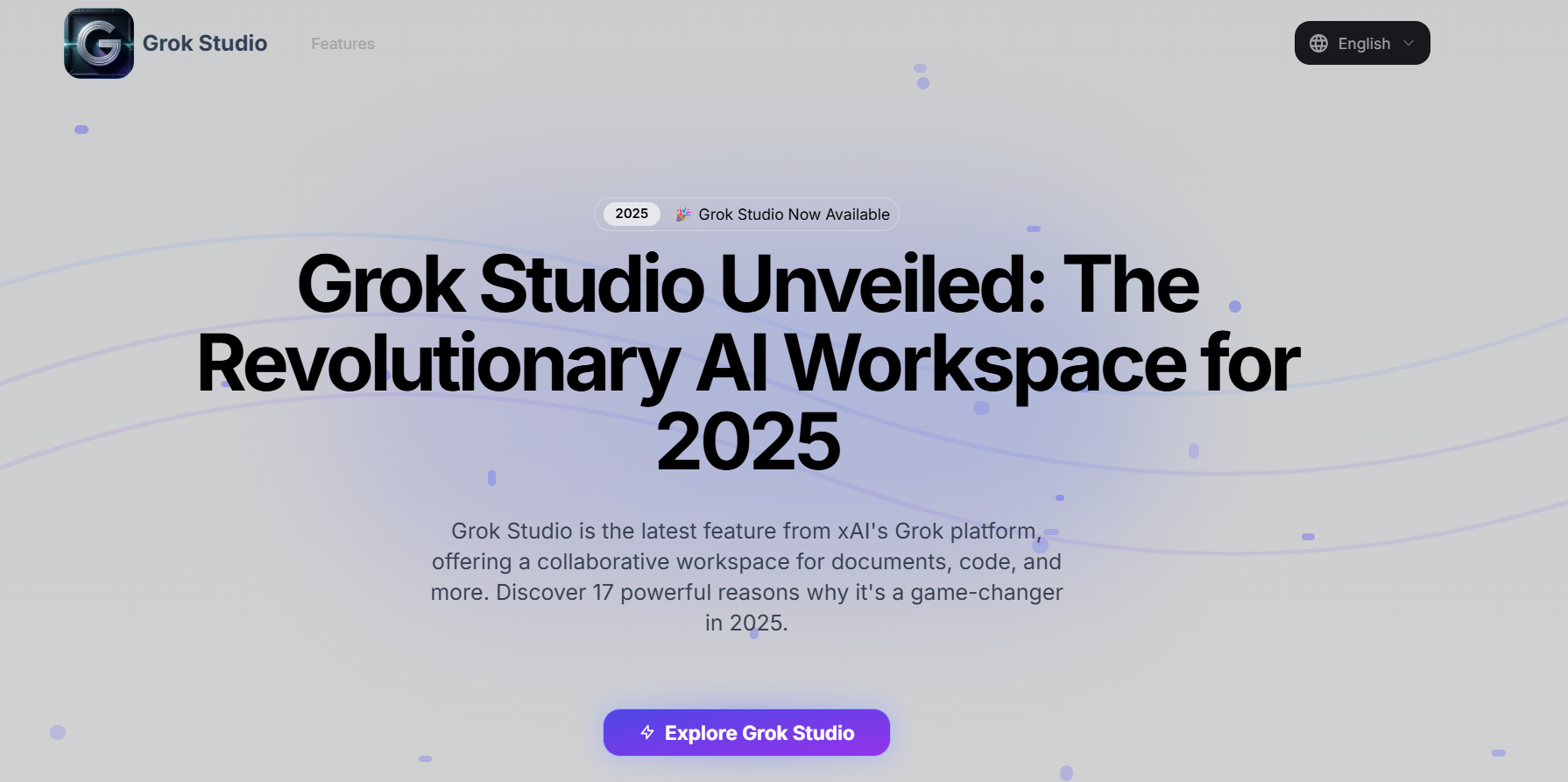

Grok Studio
Grok Studio is a split-screen, AI-assisted collaborative workspace from xAI, designed to elevate productivity with seamless real-time editing across documents, code, data reports, and even browser-based games. Embedded in the Grok AI platform, it transforms traditional chat-like interactions into an interactive creation environment. The right-hand pane displays your content—be it code, docs, or visual snippets—while the left-hand pane hosts Grok AI, offering suggestions, edits, or executing code live. Users can import files directly from Google Drive, supporting Docs, Sheets, and Slides, and write or run code in languages such as Python, JavaScript, TypeScript, C++, and Bash in an instant preview workflow. Released in April 2025, Grok Studio is accessible to both free and premium users, breaking ground in AI-assisted collaboration by integrating content generation, coding, and creative prototyping into one unified interface.


Grok Studio
Grok Studio is a split-screen, AI-assisted collaborative workspace from xAI, designed to elevate productivity with seamless real-time editing across documents, code, data reports, and even browser-based games. Embedded in the Grok AI platform, it transforms traditional chat-like interactions into an interactive creation environment. The right-hand pane displays your content—be it code, docs, or visual snippets—while the left-hand pane hosts Grok AI, offering suggestions, edits, or executing code live. Users can import files directly from Google Drive, supporting Docs, Sheets, and Slides, and write or run code in languages such as Python, JavaScript, TypeScript, C++, and Bash in an instant preview workflow. Released in April 2025, Grok Studio is accessible to both free and premium users, breaking ground in AI-assisted collaboration by integrating content generation, coding, and creative prototyping into one unified interface.


Grok Studio
Grok Studio is a split-screen, AI-assisted collaborative workspace from xAI, designed to elevate productivity with seamless real-time editing across documents, code, data reports, and even browser-based games. Embedded in the Grok AI platform, it transforms traditional chat-like interactions into an interactive creation environment. The right-hand pane displays your content—be it code, docs, or visual snippets—while the left-hand pane hosts Grok AI, offering suggestions, edits, or executing code live. Users can import files directly from Google Drive, supporting Docs, Sheets, and Slides, and write or run code in languages such as Python, JavaScript, TypeScript, C++, and Bash in an instant preview workflow. Released in April 2025, Grok Studio is accessible to both free and premium users, breaking ground in AI-assisted collaboration by integrating content generation, coding, and creative prototyping into one unified interface.
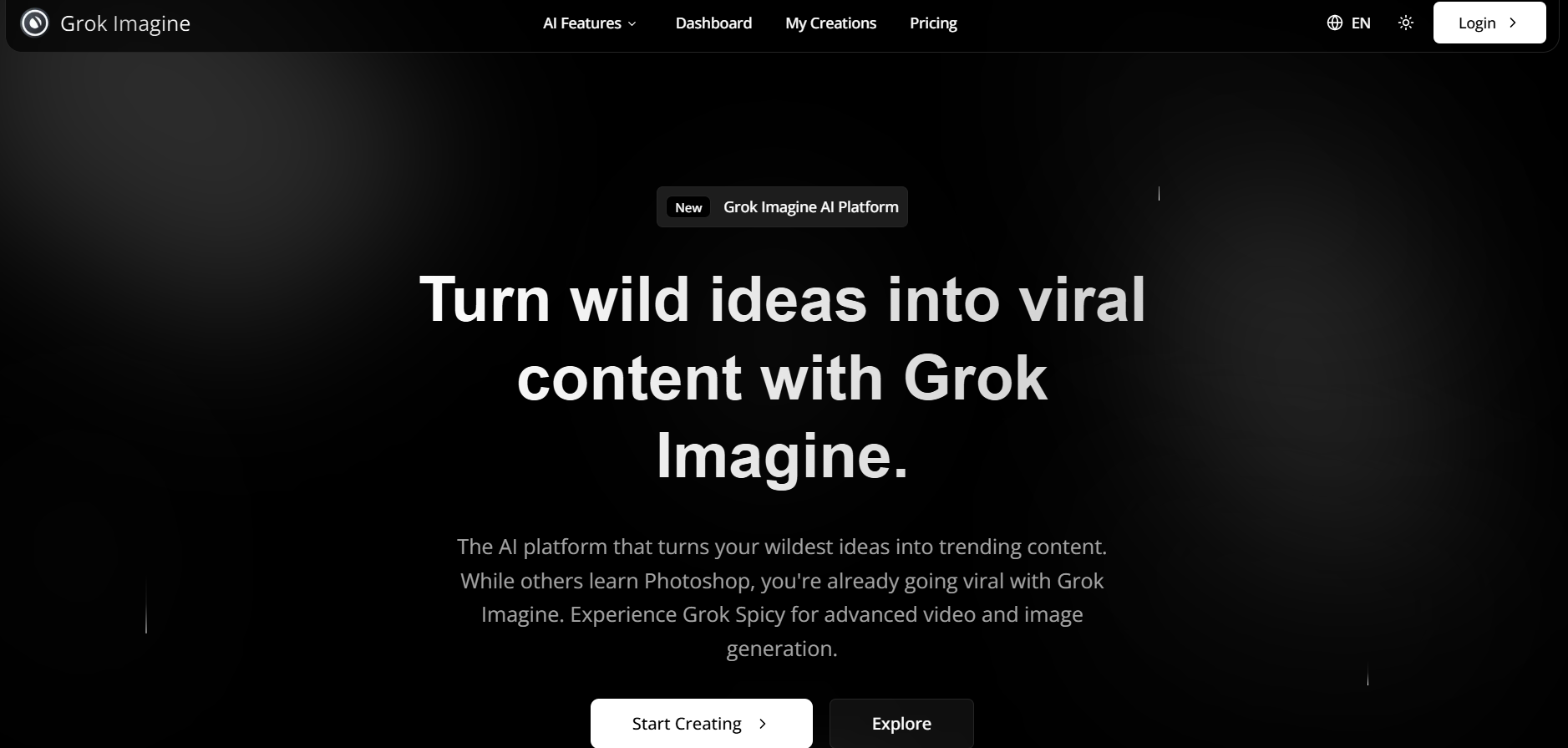

Grok Imagine
Grok Imagine is an AI-powered image and video generation tool developed by Elon Musk’s xAI under the Grok brand. It transforms text or image inputs into photorealistic images (up to 1024×1024) and short video clips (typically 6 seconds with synchronized audio), all powered by xAI's Aurora engine and designed for fast, creative production.


Grok Imagine
Grok Imagine is an AI-powered image and video generation tool developed by Elon Musk’s xAI under the Grok brand. It transforms text or image inputs into photorealistic images (up to 1024×1024) and short video clips (typically 6 seconds with synchronized audio), all powered by xAI's Aurora engine and designed for fast, creative production.


Grok Imagine
Grok Imagine is an AI-powered image and video generation tool developed by Elon Musk’s xAI under the Grok brand. It transforms text or image inputs into photorealistic images (up to 1024×1024) and short video clips (typically 6 seconds with synchronized audio), all powered by xAI's Aurora engine and designed for fast, creative production.
Editorial Note
This page was researched and written by the ATB Editorial Team. Our team researches each AI tool by reviewing its official website, testing features, exploring real use cases, and considering user feedback. Every page is fact-checked and regularly updated to ensure the information stays accurate, neutral, and useful for our readers.
If you have any suggestions or questions, email us at hello@aitoolbook.ai
